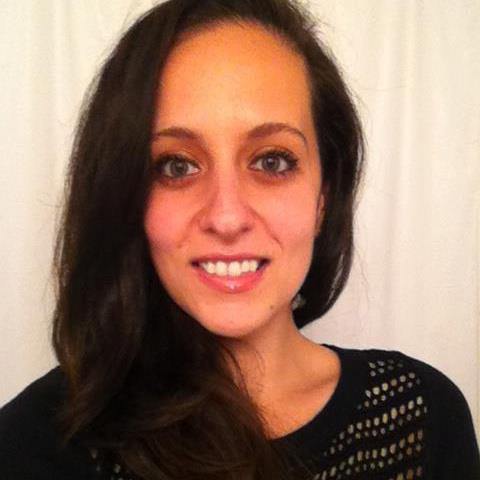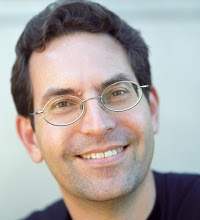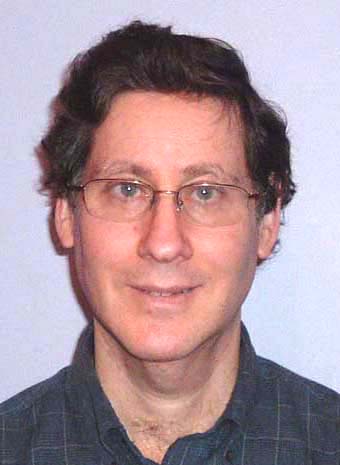News
Overview of Major eClinical Trends and Clinical Research
 Clinical research is well on its way to transforming its paper-driven model to an all things electronic format. During the past year, the clinical trial industry has made considerable progress in adopting technology as a way to streamline data collection, transmission, and monitoring. This article focuses on the top eClinical trends of 2015 and beyond. Among the latest developments- adoption rates are higher for electronic data capture (EDC), electronic source data (eSource), and eClinical integration, as the focus is now on capturing real-time data as a continuous stream. These trends are partially the result of high-tech devices, sensors and wearables entering the clinical trial industry, as well as the FDA embracing technology and opening up a dialogue with experts on how to best channel this revolution in order to advance clinical research.
Clinical research is well on its way to transforming its paper-driven model to an all things electronic format. During the past year, the clinical trial industry has made considerable progress in adopting technology as a way to streamline data collection, transmission, and monitoring. This article focuses on the top eClinical trends of 2015 and beyond. Among the latest developments- adoption rates are higher for electronic data capture (EDC), electronic source data (eSource), and eClinical integration, as the focus is now on capturing real-time data as a continuous stream. These trends are partially the result of high-tech devices, sensors and wearables entering the clinical trial industry, as well as the FDA embracing technology and opening up a dialogue with experts on how to best channel this revolution in order to advance clinical research.
- Login to post comments
- Feature Story
Halamka's 2016 Predictions for Health IT
 As the year ends and we archive the accomplishments and challenges of 2015, it’s time to think about the year ahead. Will innovative products and services be social, mobile, analytics, and cloud (SMAC)? Will wearables take off? Will clinicians be replaced by Watson? Here are my predictions...Apps will layer on top of transactional systems empowered by FHIR...a better approach is crowdsourcing among clinicians that will result in value-added apps that connect to underlying EHRs via the protocols suggested in the Argonaut Project (FHIR/OAuth/REST). One of our clinicians has already authored a vendor neutral DICOM viewer for images, a patient controlled telehealth app for connecting home devices, and a secure clinical photography upload that bypasses the iPhone camera roll. That’s the future.
As the year ends and we archive the accomplishments and challenges of 2015, it’s time to think about the year ahead. Will innovative products and services be social, mobile, analytics, and cloud (SMAC)? Will wearables take off? Will clinicians be replaced by Watson? Here are my predictions...Apps will layer on top of transactional systems empowered by FHIR...a better approach is crowdsourcing among clinicians that will result in value-added apps that connect to underlying EHRs via the protocols suggested in the Argonaut Project (FHIR/OAuth/REST). One of our clinicians has already authored a vendor neutral DICOM viewer for images, a patient controlled telehealth app for connecting home devices, and a secure clinical photography upload that bypasses the iPhone camera roll. That’s the future.
- Login to post comments
- News
How Can Open Source Projects Support Themselves in Health Care?
 High prices and poor usability hasn't driven the health care industry away from megalithic, proprietary applications. What may win the industry over to open source (in addition to the hope of fixing those two problems) is its promises of easy customization, infinite flexibility, extensibility, and seamless data exchange. As we will see, open platforms also permit organizations to collaborate on shared goals, which appeals to many participants. But if open source projects can't charge hundreds of thousands of dollars for installation as their commercial competitors do, how will they pay their developers and hold together as projects? This article compares three major organizations in the open source health care space: the tranSMART Foundation, Open Health Tools (OHT), and Open mHealth. Each has taken a different path to the universal goal of stability.
High prices and poor usability hasn't driven the health care industry away from megalithic, proprietary applications. What may win the industry over to open source (in addition to the hope of fixing those two problems) is its promises of easy customization, infinite flexibility, extensibility, and seamless data exchange. As we will see, open platforms also permit organizations to collaborate on shared goals, which appeals to many participants. But if open source projects can't charge hundreds of thousands of dollars for installation as their commercial competitors do, how will they pay their developers and hold together as projects? This article compares three major organizations in the open source health care space: the tranSMART Foundation, Open Health Tools (OHT), and Open mHealth. Each has taken a different path to the universal goal of stability.
- Login to post comments
- News
2015 Was a Good Year for Creating the World's 'Missing Maps' with OpenStreetMap
 The Missing Maps project, which launched in 2014, aims to literally and figuratively put more than 20-million at-risk people on the map using OpenStreetMap (OSM) as a platform. We need to fill in "missing maps" before the next disaster strikes, ensuring the maps have detail sufficient for emergency responders to hit the ground running. OpenStreetMap is an open and free source of geographic data. Anyone with a username can add, edit, or update data, so the Missing Maps project is community driven and focuses on local knowledge. Remote volunteers around the world use satellite imagery to trace features, such as roads and buildings. Community members and volunteers in the area then use the base map to add local data to these shapes, including street names, addresses, building types, and points of interest. As we look back at 2015, here are a few success stories from the Missing Maps project...
The Missing Maps project, which launched in 2014, aims to literally and figuratively put more than 20-million at-risk people on the map using OpenStreetMap (OSM) as a platform. We need to fill in "missing maps" before the next disaster strikes, ensuring the maps have detail sufficient for emergency responders to hit the ground running. OpenStreetMap is an open and free source of geographic data. Anyone with a username can add, edit, or update data, so the Missing Maps project is community driven and focuses on local knowledge. Remote volunteers around the world use satellite imagery to trace features, such as roads and buildings. Community members and volunteers in the area then use the base map to add local data to these shapes, including street names, addresses, building types, and points of interest. As we look back at 2015, here are a few success stories from the Missing Maps project...
- Login to post comments
- News
National Patient Identifier with FHIR is the answer
 Direct Secure messaging has been implemented across the country by many physicians and hospitals due to ONC Meaningful Use requirements. Direct is great for clinician to patient interaction or even consults in some cases. Is this really the way that we should be sharing patient information? Ideally, we want the information in the patient record not just between two clinicians out of band and not stored in the patient history. This way anyone entering later in the patient care scenario has access to the information should it become necessary and the patient has also consented to the release. Read More »
Direct Secure messaging has been implemented across the country by many physicians and hospitals due to ONC Meaningful Use requirements. Direct is great for clinician to patient interaction or even consults in some cases. Is this really the way that we should be sharing patient information? Ideally, we want the information in the patient record not just between two clinicians out of band and not stored in the patient history. This way anyone entering later in the patient care scenario has access to the information should it become necessary and the patient has also consented to the release. Read More »
- Login to post comments
- News
The Postmodern EHR: What can Health IT Learn from the Evolution of the ERP Market?
 It seems the pattern is clear. From best of breed to integrated (mega)suite to a new world of innovative, agile, mostly cloud based and multivendor solutions. This is what Gartner calls “Postmodern”. According to Christensen, disruption like this becomes possible when the established players start exceeding the requirements and expectations of their customers, providing only sustaining innovation – i.e. adding more and more features to their products. This is what was happening in the personal productivity space with the Office products. Similarly, the ERP market today has well defined requirements and this allows the newcomers to disrupt, meeting the base expectations and adding innovation and agility while lowering costs.
It seems the pattern is clear. From best of breed to integrated (mega)suite to a new world of innovative, agile, mostly cloud based and multivendor solutions. This is what Gartner calls “Postmodern”. According to Christensen, disruption like this becomes possible when the established players start exceeding the requirements and expectations of their customers, providing only sustaining innovation – i.e. adding more and more features to their products. This is what was happening in the personal productivity space with the Office products. Similarly, the ERP market today has well defined requirements and this allows the newcomers to disrupt, meeting the base expectations and adding innovation and agility while lowering costs.
- Login to post comments
- News
Using Blender to Prepare for Orthopedic Surgeries
 The planning of orthopedic surgeries is a difficult process. In a lot of ways, it's like working while wearing a blindfold; a surgeon can't see the bone that needs to be worked on until during the actual surgery, when time is most critical. Even with X-rays and CT scans, the raw data can be difficult to interpret correctly. Fortunately, open source software can (and does!) help reduce the guesswork. At the 2015 Blender Conference, Vasily Shishkin gave a very interesting talk on his research project and use of Blender and 3D printing in the planning and guiding of orthopedic surgery...You may find yourself thinking, "Wait a minute. Blender? The same Blender that's used for making pretty images and animations? That Blender?" Yes. That Blender...
The planning of orthopedic surgeries is a difficult process. In a lot of ways, it's like working while wearing a blindfold; a surgeon can't see the bone that needs to be worked on until during the actual surgery, when time is most critical. Even with X-rays and CT scans, the raw data can be difficult to interpret correctly. Fortunately, open source software can (and does!) help reduce the guesswork. At the 2015 Blender Conference, Vasily Shishkin gave a very interesting talk on his research project and use of Blender and 3D printing in the planning and guiding of orthopedic surgery...You may find yourself thinking, "Wait a minute. Blender? The same Blender that's used for making pretty images and animations? That Blender?" Yes. That Blender...
- Login to post comments
- News
Bingo Medicine: Are EHRs Oppressive Straightjackets?
 For several decades, software builders have tried to help doctors practice medicine more efficiently and more effectively. As is often the case with good intentions, the results turned out to be a mixed bag of goods, with paternalistic overtones from the helpers and mostly resentment and frustration from those supposedly being helped. Whether we want to admit it or not, the facts of the matter are that health IT and EHRs in particular have turned from humble tools of the trade to oppressive straightjackets for the practice of medicine. Somewhere along the way, the roles were reversed, and clinicians of all stripes are increasingly becoming the tools used by technology to practice medicine.
For several decades, software builders have tried to help doctors practice medicine more efficiently and more effectively. As is often the case with good intentions, the results turned out to be a mixed bag of goods, with paternalistic overtones from the helpers and mostly resentment and frustration from those supposedly being helped. Whether we want to admit it or not, the facts of the matter are that health IT and EHRs in particular have turned from humble tools of the trade to oppressive straightjackets for the practice of medicine. Somewhere along the way, the roles were reversed, and clinicians of all stripes are increasingly becoming the tools used by technology to practice medicine.
- Login to post comments
- News
Python-based Open Source Eye Tracking Tool
 I have a deep interest in educational psychology, and so I was fascinated by what I read about PyGaze—an open source toolbox for eye tracking in Python. The website told me that it runs on Linux, but I wanted to learn more about eye tracking and the role it plays in psychological research. I also wanted to know more about the project and how it is contributing to research and its implications for open source. In this interview, the lead developer for the project, Edwin Dalmaijer, who works at the University of Oxford's Department of Experimental Psychology doing research and programming, provides a fascinating description of PyGaze and the significance of eye tracking in research...
I have a deep interest in educational psychology, and so I was fascinated by what I read about PyGaze—an open source toolbox for eye tracking in Python. The website told me that it runs on Linux, but I wanted to learn more about eye tracking and the role it plays in psychological research. I also wanted to know more about the project and how it is contributing to research and its implications for open source. In this interview, the lead developer for the project, Edwin Dalmaijer, who works at the University of Oxford's Department of Experimental Psychology doing research and programming, provides a fascinating description of PyGaze and the significance of eye tracking in research...
- Login to post comments
- News
Halamka: 2015 In Review
 It’s now December and as each year ends, I always look back on the challenges and achievements of the past 12 months. Here’s my sense of 2015. ICD10 - billions were spent, countless other projects were delayed, and the transition occurred on October 1 without a major incident...Did we get our money’s worth? I have argued and will continue to assert that ICD-10 benefited no one. The diagnoses used are more variable so there is less precision in their use. Clinical documentation (in general in the industry) does not have the specificity needed to justify the more granular ICD-10 codes. The notion that quality measures can now be computed more accurately from ICD-10 coded administrative data is just not true...
It’s now December and as each year ends, I always look back on the challenges and achievements of the past 12 months. Here’s my sense of 2015. ICD10 - billions were spent, countless other projects were delayed, and the transition occurred on October 1 without a major incident...Did we get our money’s worth? I have argued and will continue to assert that ICD-10 benefited no one. The diagnoses used are more variable so there is less precision in their use. Clinical documentation (in general in the industry) does not have the specificity needed to justify the more granular ICD-10 codes. The notion that quality measures can now be computed more accurately from ICD-10 coded administrative data is just not true...
- Login to post comments
- News